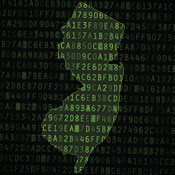42 privégegevens die van jou worden verzameld
28 jan. 2015 door

28 jan. 2015 door
Nieuws - Ben je ook zo benieuwd welke privacygevoelige data wordt opgeslurpt door het Alziende Oog van de opsporingsdiensten als je onbekommerd je vlucht neemt naar zonnig Marbella, deze zomer? We hebben ze op een rijtje gezet.
De Europese Commissie wil 42 persoonlijke details van je weten als je een vliegtuig boekt voor een interne vlucht op ons continent. Die data worden vervolgens vijf jaar opgeslagen in een centrale database en wordt telkens als je opnieuw een ticket besteld verrijkt met nieuwe data. Waarom is dat? Nou, terrorisme en zo. Niet dat ooit is bewezen dat het massaal vergaren en opslaan van data van alle burgers iets heeft uitgehaald in de strijd tegen terrorisme, maar elke maatregel bekt zo lekker als daadkrachtig bestuur.
Maar welke data wordt dan opgeslagen? We geven ze hier alle 42 op een rijtje, met dank aan The Guardian:
Veel van de data heeft een zeer hoog "aha, dat is herkenbaar"-gehalte. Daarnaast is er een aantal technische data, bedoeld voor gebruikers van het PNR-systeem. PNR staat voor Passenger Name Records, een systeem dat al jaren wordt gebruikt door vliegmaatschappijen. In het rijtje komt verder de afkorting API voor, dat staat voor Advance Passanger Information en dat gebruikt wordt door vooral de Amerikanen om vooraf al te weten wie er aan komt vliegen.
Sommige specifieke punten zijn minder duidelijk: wat wordt er bedoeld met algemene opmerkingen (27) bijvoorbeeld. Je go-show-verleden lijkt het aantal malen dat je daadwerkelijk op komt dagen bij de gate.
Het plan om deze data op te slaan en onderling te delen, wordt dit jaar door het Europees Parlement behandeld. Ondanks fel verzet van privacyvoorvechters lijkt er een meerderheid in het parlement te zijn voor deze massale dataopslag.
- Je paspoortnummer
- Welk land je paspoort heeft uitgegeven
- Wanneer je paspoort verloopt
- Je doopnamen
- Je achternaam
- Je geslacht
- Je geboortedatum
- Je nationaliteit
- Een zogeheten passenger name record locator code (code voor PNR-opslag)
- Datum van ticketreservering
- De data waarop je geboekte vlucht(en) gaat/gaan
- Je volledige naam
- Andere namen die elektronisch verbonden zijn aan je naam
- Je adres
- Alle vormen van betaalinformatie
- Het adres dat gebruikt wordt bij het bestellen/betalen
- Opgegeven telefoonnummers/contactinformatie
- Alle reisplannen voor dit specifieke PNR
- Frequent Flyer-informatie
- Reisbureau
- Reisagent
- Deelcode voor PNR-informatie
- Reisstatus van de passagier
- Op te delen PNR-informatie
- E-mailadres
- Informatie uit het ticketsysteem
- Algemene opmerkingen
- Ticketnummer
- Stoelnummer
- Datum waarop ticket is uitgegeven
- Je no-show-verleden
- De gegevens van je kofferlabel
- Je go-show-verleden
- Andere service-gerelateerde informatie
- Speciale verzoeken, zoals voedselvoorkeuren
- Informatie over waar deze informatie vandaan komt
- Alle historische wijzigingen in deze PNR-data
- Aantal reizigers in dit specifieke PNR-record
- Stoelinformatie
- Enkele reis-informatie
- Alle API-systeeminformatie
- De software die gebruikt is om het ticket aan te maken
Veel van de data heeft een zeer hoog "aha, dat is herkenbaar"-gehalte. Daarnaast is er een aantal technische data, bedoeld voor gebruikers van het PNR-systeem. PNR staat voor Passenger Name Records, een systeem dat al jaren wordt gebruikt door vliegmaatschappijen. In het rijtje komt verder de afkorting API voor, dat staat voor Advance Passanger Information en dat gebruikt wordt door vooral de Amerikanen om vooraf al te weten wie er aan komt vliegen.
Sommige specifieke punten zijn minder duidelijk: wat wordt er bedoeld met algemene opmerkingen (27) bijvoorbeeld. Je go-show-verleden lijkt het aantal malen dat je daadwerkelijk op komt dagen bij de gate.
Het plan om deze data op te slaan en onderling te delen, wordt dit jaar door het Europees Parlement behandeld. Ondanks fel verzet van privacyvoorvechters lijkt er een meerderheid in het parlement te zijn voor deze massale dataopslag.












